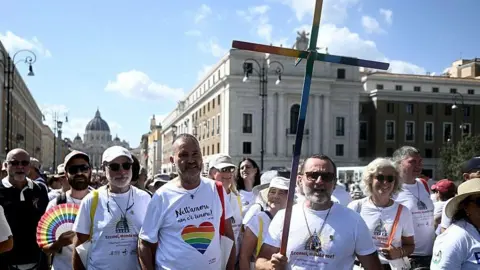As anticipation peaked in Vatican City, 133 cardinals gathered inside the secured confines of the Sistine Chapel to elect the successor to Pope Francis, amidst the eager crowd assembled in St. Peter's Square. The moment was charged with historical significance as observers awaited a sacred sign—either black or white smoke—indicating the outcome of the vote.
The voting commenced on Wednesday evening, with each cardinal casting their ballots in an age-old tradition, carefully concealing their handwriting to maintain secrecy. Outside the chapel, the atmosphere resonated with hope and curiosity as thousands of pilgrims, tourists, and spectators braved the elements, eagerly awaiting news about the papal selection.
At 9 p.m., however, the signal came not in the form of the anticipated white smoke signaling a newly elected pope—an occurrence that has not happened in over a decade—but rather in the ominous black smoke. This disheartening signal indicated that the voting process was inconclusive, necessitating further rounds of deliberation by the cardinals.
Among the crowd was Rev. Peter Mangum from Monroe, Louisiana, who had made the journey to witness this pivotal moment for the fourth time. Surrounded by fellow priests, he commented on the physical discomforts of waiting outside, sharing the sentiment of many in the square who braved the chilly weather in pursuit of hope.
While the voters remained sequestered inside the chapel with no access to cell phones or outside distractions, the world held its breath for the next signal. The wait for a decisive papal choice will continue, and with each round of voting, the historical resonance of this moment only deepens, bridging the past with the future of the Catholic Church.























